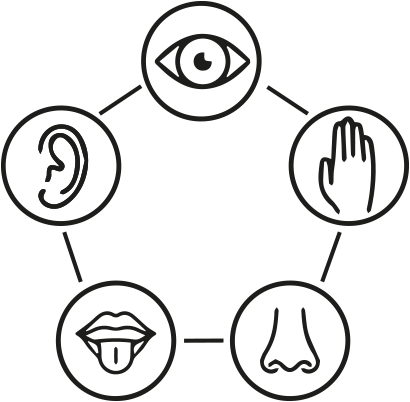| Teaching Sensory Anthropology
2014
https://culanth.org/fieldsights/teaching-sensory-anthropology
Led by:
|
| Intended learning outcomes
After this lesson students should:
- Have gained basic knowledge of Sensory Anthropology and ongoing debates in the field.
- Have an understanding of how sensory awareness is put into practice by researchers in order to solve challenges of presentation and representation.
- Have gained practical skills in Sensory Ethnography, including experimental data collection methods.
|
| Learning objectives (course specific) |
| Objective statement (course description) |
| Type of course
Extracurricular course |
Target group
- Undergraduate students in Visual Anthropology, Cultural Anthropology, Sociology, Art, and other disciplines using ethnography as a methodology
- Faculty teaching seminars on Visual Anthropology and/or anthropological methods
|
| Teaching method
|
| Activities/syllabus
Pre-class Assignments
- Read “The Future of Sensory Anthropology/The Anthropology of the Senses” by Sarah Pink
- Listen to the podcast “Sensory Multiculturalism in an East End Market”, Thinking Allowed, BBC Radio 4
Opening Activity
- Imagine an ethnographic study of your neighborhood. What sensory experiences come to mind? What do they tell you about this place?
- Discuss: How is sensory awareness important for ethnographers?
In-class/Seminar Activities
Film discussion
- Watch the trailer for the film “Leviathan”
- Discuss: what sensations is the film trying to evoke? What resources do the filmmakers use in order to evoke these sensations? What questions around presentation and representation do documentary films bring about?
Small scale sensory ethnography project
Total time: 40 minutes aprox, including activity guidelines, data gathering, and group discussion.
- Split into small groups. Take a walk around the University campus. Record your surroundings and what you encounter. Each group should focus on a different sense where possible (smell, touch, sight…) and record the stimuli provided to this particular sense.
- Note: Experiment with your recording methods! You can use photography, notes, audio recordings, material collection, video, drawing, collage, etc.). Feel free to use unconventional modes of representation for recording a specific type of sensory experience. You can use equipment from the media lab or improvise with whatever tools you have at hand (e.g. your phone or color pens) (15 minutes).
- Each group should present findings and explain (15 minutes):
- What forms of data collection did you use? Why?
- What worked well? What didn’t? What are the pros and cons of each method?
- Group discussion (10 minutes):
- Can we have anthropological research that is only about one particular sense? Why?
- How can sensory methods enhance traditional written ethnography? What are the possibilities that experimental methods with diverse media provide for conveying anthropological insights derived from sense data?
Discussion Questions:
- Are sensory anthropology and the anthropology of the senses different things? Refer to Pink (2010)
- What is the difference between representation and presentation in ethnographic practice? How can sensory ethnography deal with these issues? What are the benefits and limitations of sensory approaches for the work of anthropologists?
|
| Assessment of learning
Not specified |
| Effect (witness account, evaluation of the course)
Unknown |
| Additional biblio sources
Books
- Howes, David. Empire of the Senses: The Sensual Cultural Reader. Oxford: Berg, 2004.
- Howes, David. The Varieties of Sensory Experience: A Sourcebook in the Anthropology of the Senses. Toronto: University of Toronto Press, 1991.
- Ingold, Tim. The Perception of the Environment. London: Routdlege, 2000.
- Pink, Sarah. Doing Sensory Ethnography. London: Sage, 2009.
Journal Articles
- Bloustien, G. 2003. “Introduction: Envisioning Ethnography—Exploring the Meanings of the Visual in Research.” Social Analysis: The International Journal of Social and Cultural Practice 47, no. 3: 1-7
- Pink, Sarah. 2013. “Engaging the Senses in Ethnographic Practice: Implications and Advances”. The Senses and Society 8, no. 3: 261-267.
- Pink, Sarah. 2011. “Multimodality, Multisensoriality and Ethnographic Knowing: Social Semiotics and the Phenomenology of Perception”. Qualitative Research 11, no. 3: 261-276.
- Pink, Sarah. 2010. “The Future of Sensory Anthropology/The Anthropology of the Senses.” Social Anthropology 18, no. 3: 331-333.
- Rhys-Taylor, Alex. 2013. “The Essences of Multiculture: A Sensory Exploration of an Inner-City Street Market”. Identities: Global Studies in Culture and Power 20, no. 4: 393-406.
Podcasts
Multimedia Content
Websites
|
